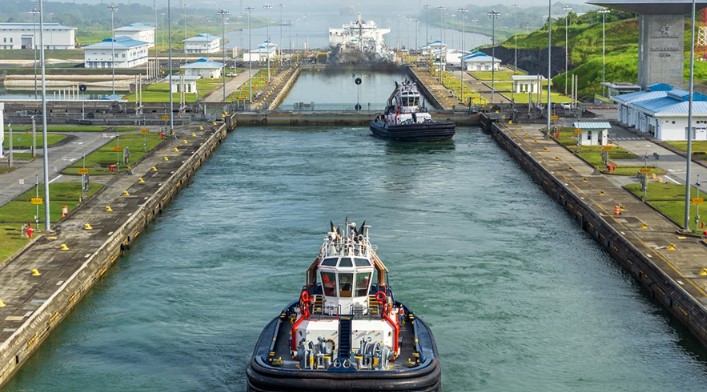The Panama Canal is one of the most important waterways in the world, connecting the Atlantic and Pacific oceans and promoting the transportation of goods between them. In recent years, the Panama Canal Authority (ACP) has taken important steps towards sustainability and environmental responsibility. Two key initiatives are the Panama Canal Green Route Plan 2050 and the carbon neutrality commitment to 2030.
The Panama Canal Green Route Plan 2050 is a long-term strategy aimed at reducing the carbon footprint of the canal and promoting sustainable practices. The plan includes a series of plans, such as reducing emissions from ships crossing the canal, developing renewable energy, and implementing more effective water management practices. The main goal of the plan is to reduce greenhouse gas emissions in the operation of the canal by achieving carbon neutrality from 2030 to 2050 to 2050.
In order to achieve these goals, ACP is implementing a series of measures, such as optimizing the use of tugboats to reduce fuel consumption, implementing coastal power systems to enable ships to plug into the power grid and reduce emissions, while waiting for the transportation of the canal, and promoting the use of clean fuels such as liquefied natural gas (LNG) and biofuels in the canal. The canal also uses solar and wind energy, as well as other renewable energy sources, to explore and reduce its dependence on fossil fuels.

In addition to the green path plan, ACP also promises to achieve carbon neutrality by 2030, which means that the operation of the canal will not lead to global greenhouse gas emissions, and any other emissions will be offset by purchasing carbon credits or other measures. Achieving carbon neutrality will require significant efforts from the Canal Authority and its partners, including the shipping industry, but this is a crucial step towards a more sustainable future.
At the end of March 2023, ACP released a consultation on transportation A-12-2023, announcing the implementation of a green vessel classification system aimed at encouraging the use of environmentally friendly vessels to reduce greenhouse gas emissions and promote sustainable transportation practices.
Subsequently, starting from May 1, 2023, ACP will require the following mandatory documents to be provided by vessels above 38.1 meters before the expected transit of the canal can begin:
1. The International Energy Efficiency Certificate (IEEC) and its building records related to energy efficiency issued by the Classification Society and submitted through an offshore single window application should be verified.
2. The bow thruster (horsepower)/arrival displacement ratio must be submitted before the first crossing of the ship; From then on, the operational status of each transport must be confirmed.
In order to verify the use of zero carbon fuel, a bunker delivery note (BDN) for the use of fuel must be provided during transportation and submitted through the same application for IEEC information.
However, some ships are only exempt, such as warships, and ships with less than 1000 pcs/ums tons or 1000 tons of displacement.
The data collected from these submissions will be used to develop a database that enables ACP to evaluate the technical, environmental, and technical characteristics of ships passing through it. In addition, the database will help detect patterns or trends in the use of specific technologies to achieve operability and efficiency, which may affect the concentration and operation of ships at the proposed level in the Green Connect Environmental Identification Plan.

